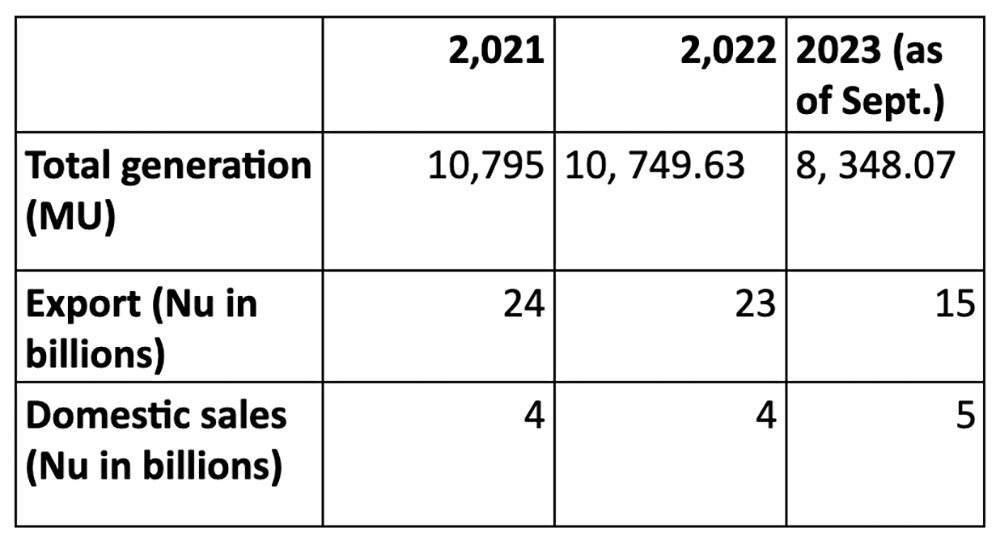…sales dropped by around 19 percent in Jan – Sept
Thukten Zangpo
Bhutan’s electricity export witnessed a significant drop of 18.8 percent in the initial nine months (January to September), despite the consistent electricity generation.
The recorded export sales amounted to Nu 15.04 billion, compared to Nu 18.52 billion in the corresponding period last year.
Hydropower sales constitute over 75 percent of the total electricity exports.

In 2022, Bhutan exported electricity valued at Nu 22.66 billion, and in 2021, the figure stood at Nu 24.2 billion. The export statistics encompass power generated by Tala, Chhukha, Kurichhu, Basochhu, Mangdechhu, and Dagachhu power plants.
The overall electricity generation during the first nine months reached 8,348.07 million units (MU), a marginal decline from 8,358.46MU in the same period last year. The maintenance of Tala hydropower’s underwater infrastructure took place from January to March 16 this year.
The decrease in hydropower export sales is attributed to a considerable rise in domestic consumption.
Increased domestic consumption impacts overall revenues since the domestic tariff generation is comparatively lower than the export tariff.
Domestic consumption during the first nine months of this year surpassed that of 2022, amounting to Nu 4.59 billion compared to Nu 4.41 billion.
The electricity export tariffs for various power plants are maintained at Nu 2.55 per unit for Chhukha, Nu 2.23 per unit for Kurichhu and Tala, and Nu 3.399 per unit for Dagachhu. In contrast, domestic sales follow a tariff of Nu 0.13 per unit for royalty energy and Nu 1.2 per unit for other consumption.
Bhutan experienced a surge in electricity imports in early 2023, procuring 50 percent more electricity than the previous year. The country purchased 367MU of electricity worth Nu 1.73 billion from January to April, marking an increase of 127MU or Nu 927.27 million compared to the same period in 2022.
The import approval for 2022 was sought from the Indian government, with the purchase conducted through a competitive bidding process on the Indian Energy Exchange’s Day Ahead Market. The exchange prices are determined through a double-sided auction, reflecting competitive bidding every 15 minutes.


